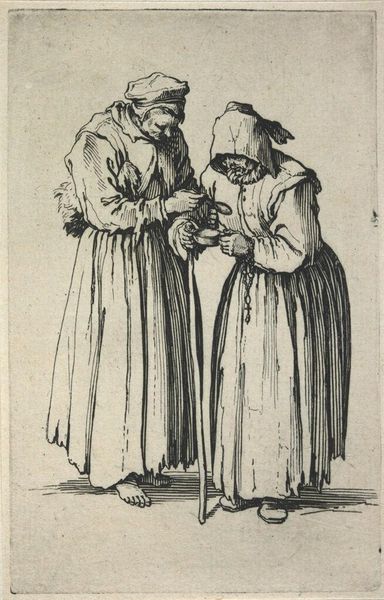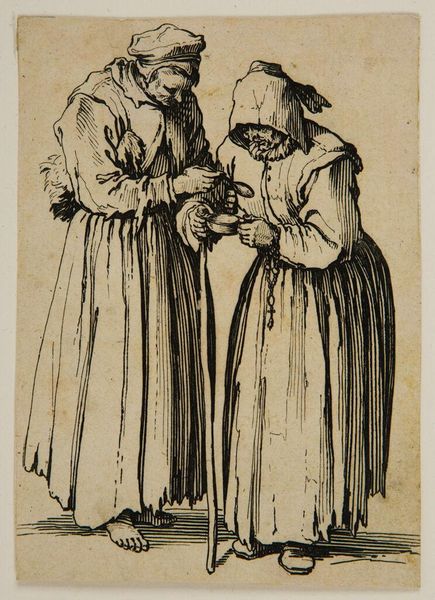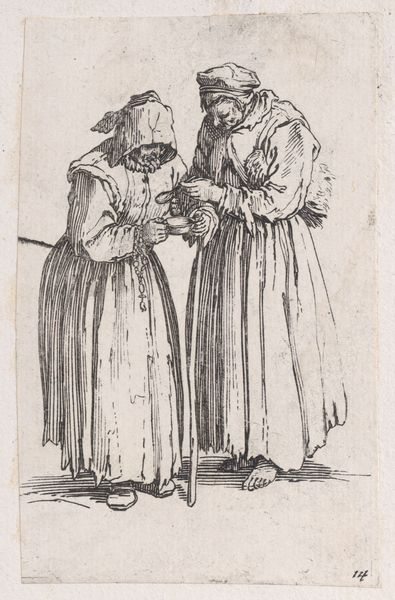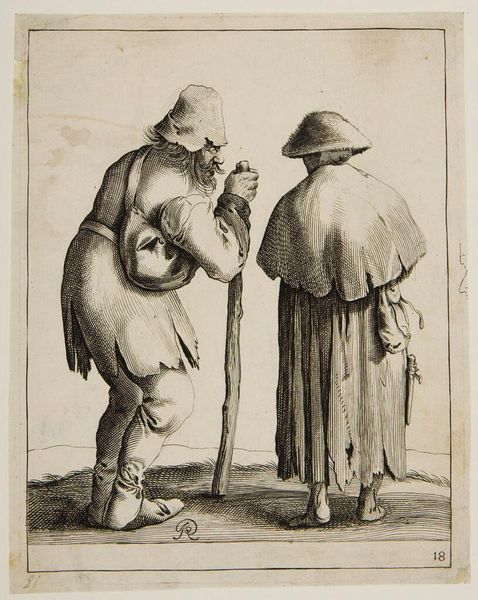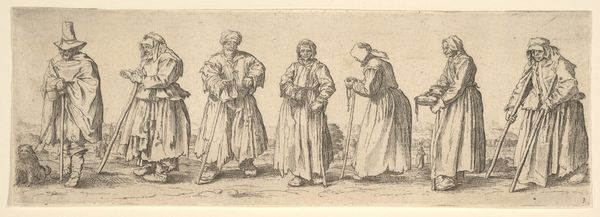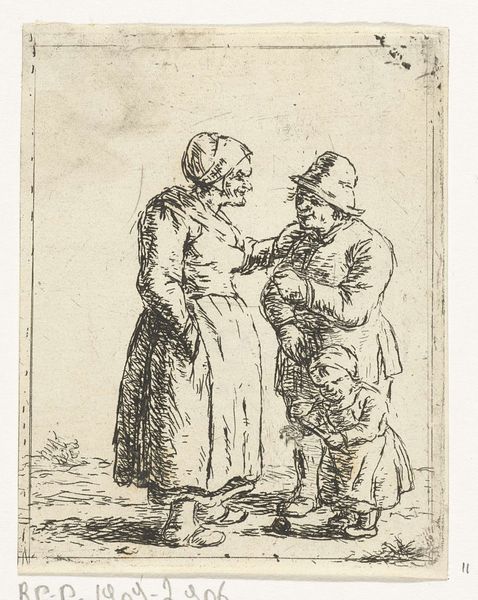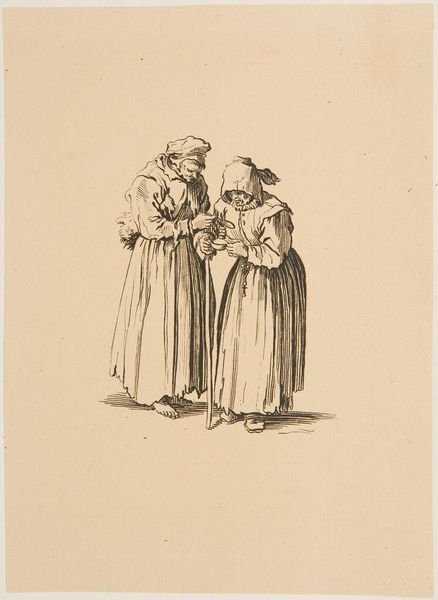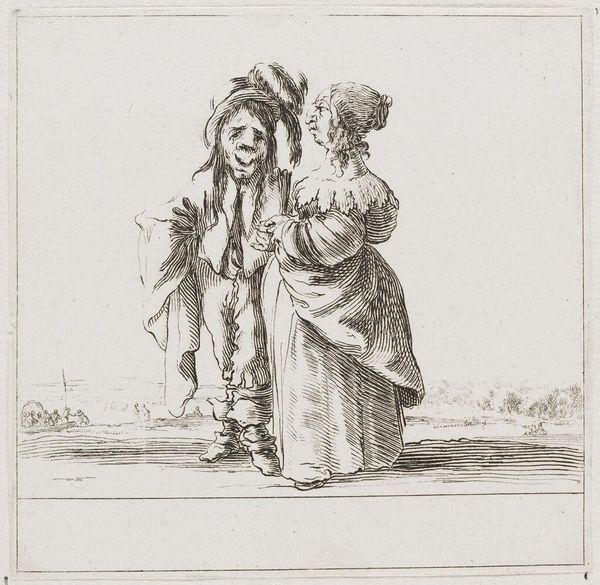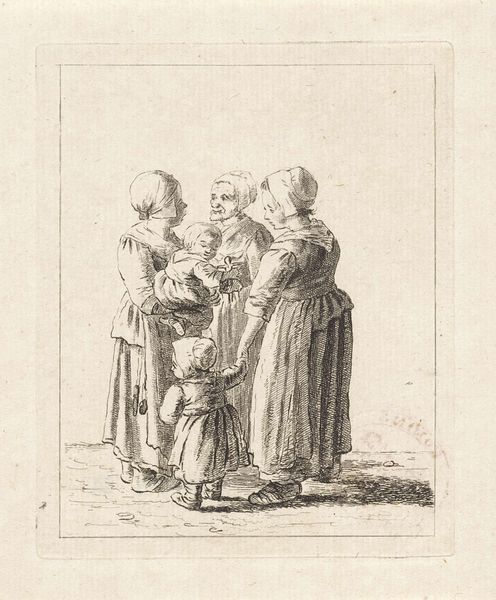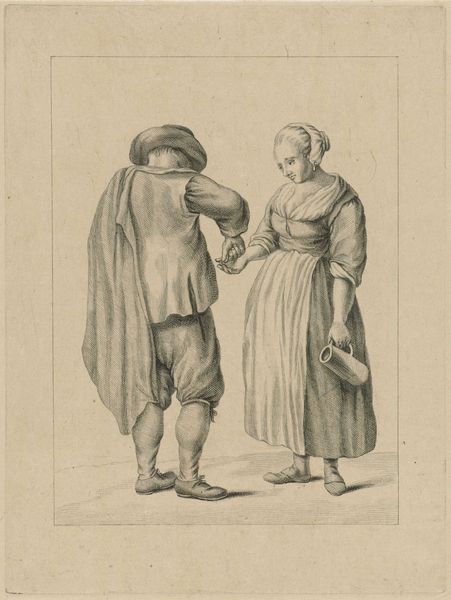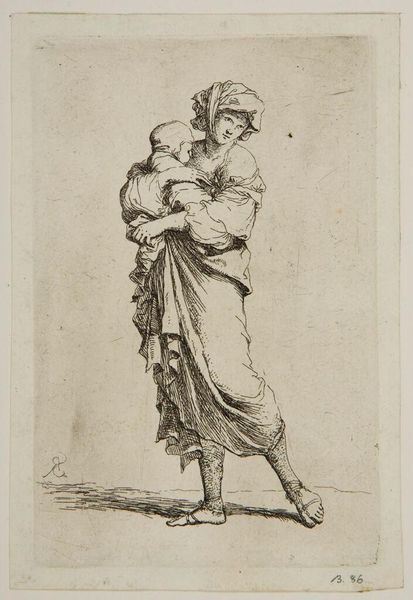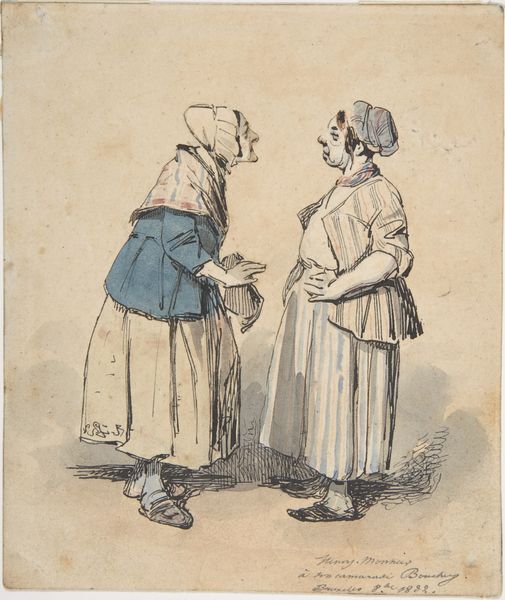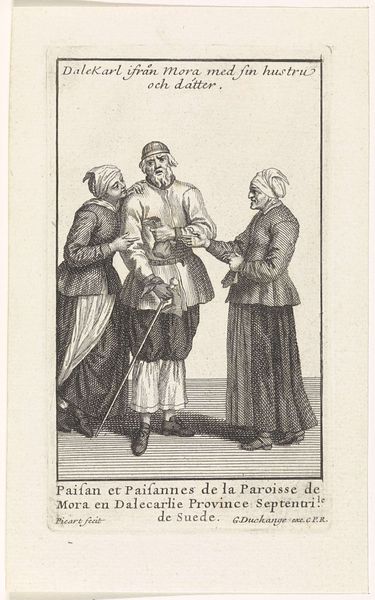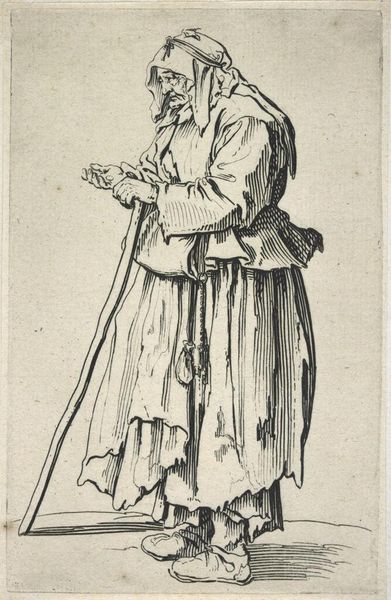
Dimensions: Plate: 13.7 Ã 9 cm (5 3/8 Ã 3 9/16 in.) Sheet: 15.2 Ã 10.3 cm (6 Ã 4 1/16 in.)
Copyright: CC0 1.0
Curator: The stark lines immediately strike me; the angularity creates a palpable sense of destitution. Editor: This is Jacques Callot's "Two Beggar Women," an etching currently housed at the Harvard Art Museums. Callot, who lived from 1592 to 1635, was deeply engaged with representing the social realities around him. Curator: The materiality of the print emphasizes accessibility and distribution. These images were meant to circulate, reaching a wide audience. Editor: Precisely. The etched lines, so stark and unflinching, bring a certain gravity to these figures, don't you think? The composition itself, the way they huddle together, reinforces this sense of shared hardship. Curator: Absolutely. Consider the economic context of 17th-century Europe, the vast inequalities, the changing systems of labor that left many vulnerable. Callot isn't just depicting poverty; he's showing us a system at work. Editor: The close observation, the almost clinical detail in rendering their garments and expressions is quite powerful. It makes us confront their reality head-on. Curator: It does; it compels us to think about the labor required to produce even such a seemingly simple image, and the labor and consumption that constitute their world. Editor: Indeed. It's a powerful reminder of the layers of meaning and making embedded in this small print.
Comments
No comments
Be the first to comment and join the conversation on the ultimate creative platform.
